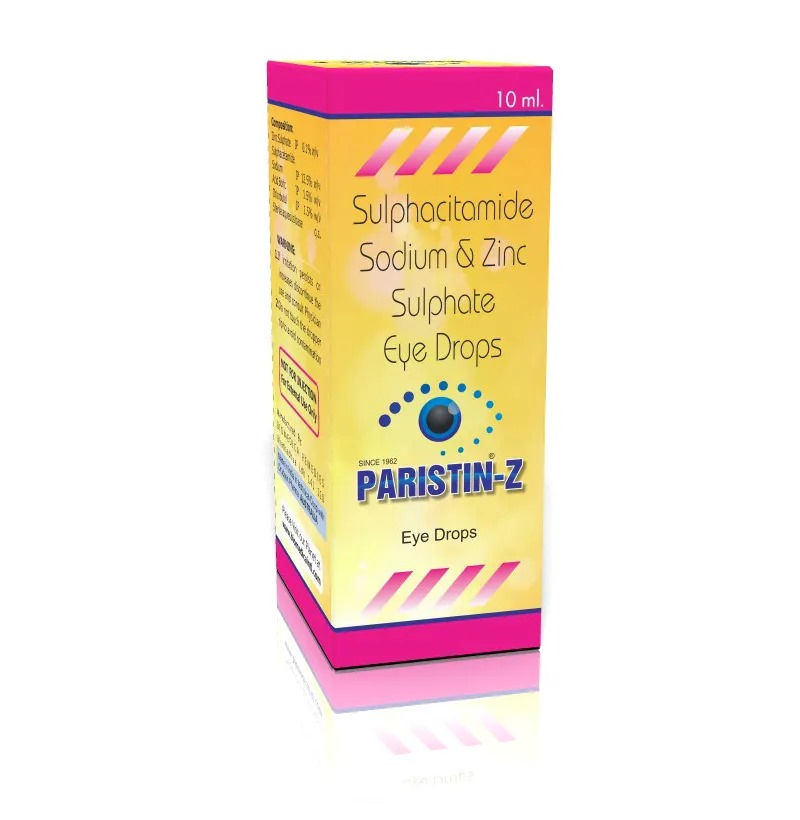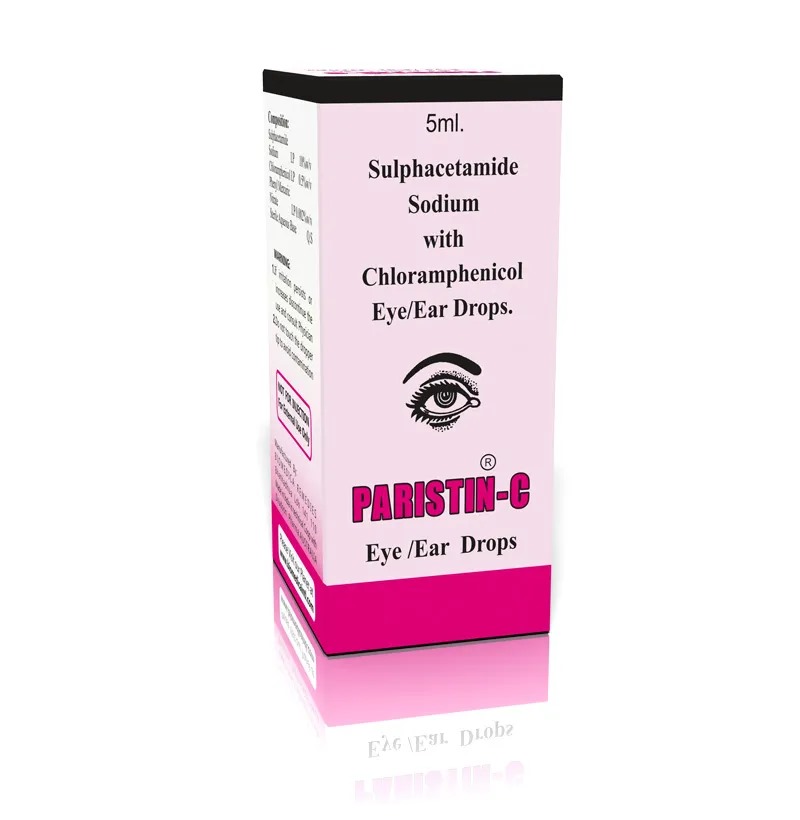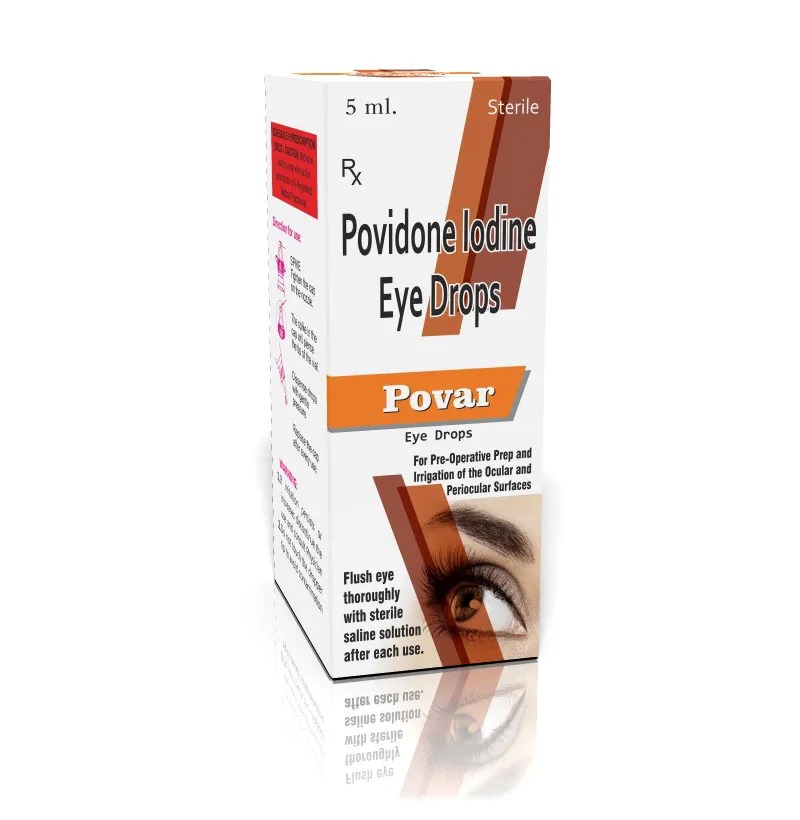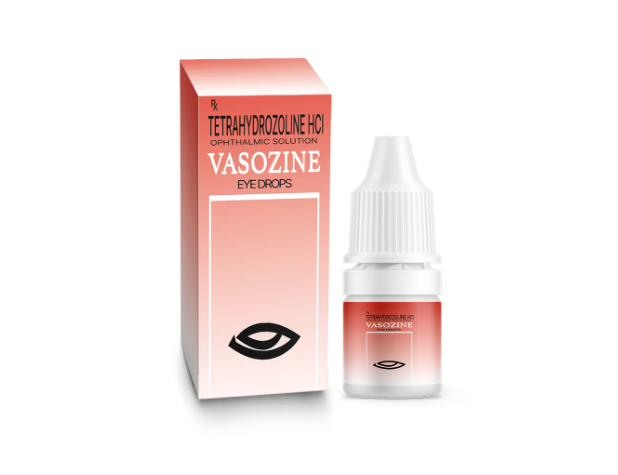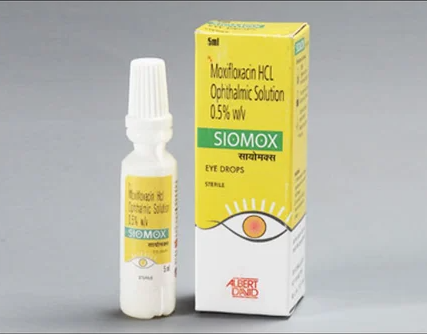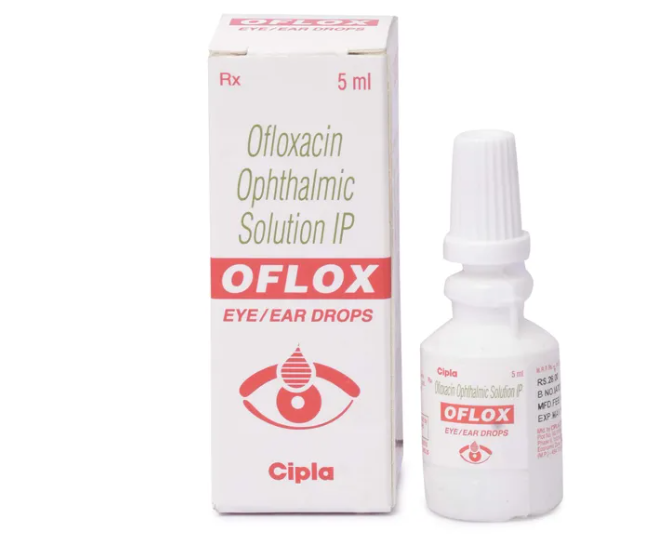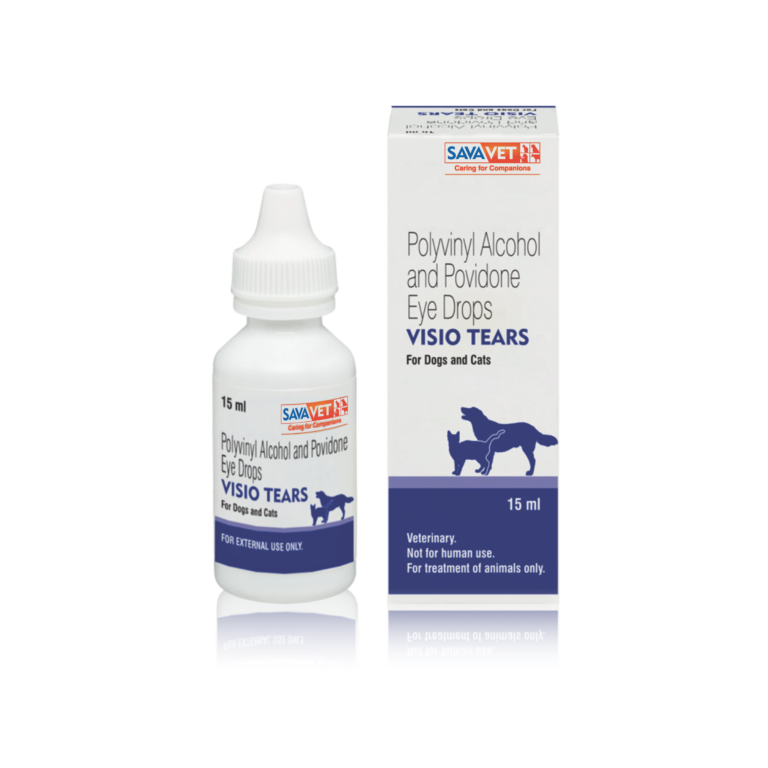Paristin-Z (Sulphacetamide & Zinc Sulphate) Eye Drops Uses: • Bacterial Eye Infections: Paristin-Z is primarily used to treat bacterial eye infections such as conjunctivitis (pink eye), blepharitis (inflammation of the eyelids), and other superficial eye infections caused by susceptible bacteria. • Eye Irritation Relief: The combination of Sulphacetamide and Zinc Sulphate helps alleviate symptoms like redness, itching, and discharge associated with eye infections. Dosage: • Typical Dosage: Instill 1–2 drops into the affected eye(s) every 3 to 4 hours, or as directed by your healthcare provider. • Application Method: 1. Wash your hands thoroughly before use. 2. Tilt your head back and gently pull down the lower eyelid to create a small pocket. 3. Place the dropper tip near the eye without touching it. 4. Squeeze the prescribed number of drops into the pocket. 5. Close your eye and blink several times to spread the solution evenly. Precautions: • Allergic Reactions: If you experience signs of an allergic reaction such as rash, itching, swelling, or difficulty breathing, discontinue use and consult your doctor immediately. • Contact Lenses: Avoid wearing contact lenses during the course of treatment unless advised otherwise by your healthcare provider. • Pregnancy and Breastfeeding: Consult your doctor before using Paristin-Z if you are pregnant or breastfeeding. Side Effects: • Common Side Effects: o Temporary burning or stinging upon application. o Mild irritation or redness. o Temporary blurred vision. • Serious Side Effects: o Persistent eye pain or swelling. o Worsening of vision. o Signs of an allergic reaction (rash, itching, swelling).
Send Message